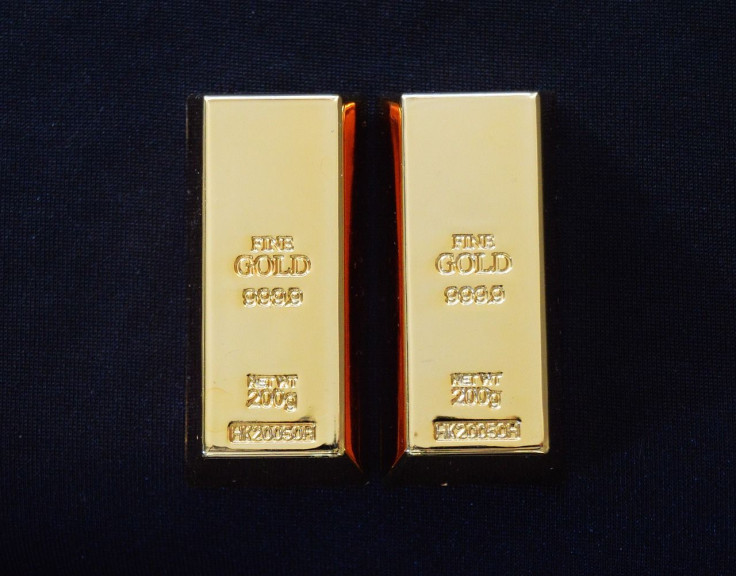As Cloudy Economy Pushes Up Gold, Analysts Say Rally Has Legs
KEY POINTS
- Demand for the yellow metal was at 1,083.8 tons in Q1 2020, a 1% rise y-o-y
- Gold briefly touched $1,807 per ounce Wednesday (July 1), its highest intraday level since September 2011
- With the pandemic showing no signs of easing, gold demand is only expected to grow
The ongoing global economic crisis has added new shine to the yellow metal, a safe haven asset that investors turn to when equity markets turn risky and the economy looks shaky. Analysts now say investors are looking at gold as a safe option with a time horizon of at least two to three years, an indication that there is little optimism about an economic turnaround any time soon.
In a research note quoted by CNBC, Ole Hansen, Head of Commodity Strategy at Saxo Bank, predicted that the price of gold will touch a new record high in the next few years. The outlet reported that the yellow metal briefly touched $1,807 per ounce Wednesday (July 1), its highest intraday level since September 2011, when it recorded $1,819 per ounce. Gold closed Thursday at $1,786.40 per ounce at 4:04 a.m EDT.
Though stock markets have rallied on the back of positive triggers, such as encouraging coronavirus vaccine trials, analysts expect it to be short-lived. “You can’t judge the economy on just one data point for one day ... People think the economy is coming back and that the Fed will not have to stimulate as much,” Michael Matousek, head trader at U.S. Global Investors, told CNBC. "However, the U.S. central bank’s minutes released Wednesday state that it will keep rates low until 2022, so therefore that provides a bid for gold.”
Analysts speaking to Reuters echoed the same view. They said that gold’s overall trajectory will remain upward owing to large monetary stimulus packages issued by governments across the globe to cushion economies from the fallout of pandemic-induced lockdowns.

Reuters quoted Peter Fertig, research analyst at Quantitative Commodity Research, as saying, “The central banks are providing liquidity to the market and this is changing the relative yield structure in asset markets. With flooding the markets (with liquidity), there is an incentive to invest in gold and not only riskier markets.”
Gold is now a hedge against a crumbling economy, volatile equity markets and a feared fresh wave of the pandemic. The extended lockdowns across the globe have devastated jobs, impacted earnings of many companies, and cratered economies. Additionally, economists such as Stephen Roach are bearish on the greenback; Roach has made the dire prediction that the dollar will plummet 35% against other currencies in the near future.
Last month, the International Monetary Fund forecast the global gross domestic product to contract 4.9% in 2020, lower than the 3% fall it predicted in April.
And with a feared second wave of the pandemic holding back any quick economy recovery, gold can be expected to stay the favorite.
Investment company Allegiance Gold expects gold prices to be between $1,800 and $2,000 an ounce before the November presidential elections. And last month, Royston Wild, a contributor for Forbes, advised investors to buy gold stocks. He said, “Buying into some big-dividend-paying gold stocks would be a good plan.”
The World Gold Council said in its latest ‘Gold Demand Trends’ report that the demand for gold rose 1% to 1,083.8 tons in the first quarter of 2020 from the year-ago period. The reported pointed to the coronavirus pandemic as pushing up demand.
The report also pointed to the rising popularity of gold exchange-traded funds, or ETFs, indicating a shift in the manner of investing in the yellow metal. "Gold ETFs saw the highest quarterly inflows for four years amid global uncertainty and financial market volatility. Holdings of this asset class touched a record high of 3,185 tons by the end of Q1. These investment inflows helped push the U.S. dollar gold price to an eight-year high," it said.
Historically, gold prices have risen whenever the economic outlook has turned bleak. One example dates back to June, 2016, when gold prices spiked sharply by $100 an ounce in six hours, triggered by the Brexit panic. Prices rose from $1,254.96 at 4 p.m. (London time) on June 23, the day of the Brexit vote, to $1,347.12 at midnight, according to a report in ‘The Balance,’ an online portal that focuses on public finance.
This time, gold prices can be expected to continue to rise.
© Copyright IBTimes 2024. All rights reserved.






















